4 European Events Harmonizing Art, Nature, and Techno Music
Techno and electronic music have always shared an intimate relationship with art, intertwining rhythms, beats, and melodies with visual expressions...
Celia Leiva Otto 30 May 2024
The use of color has always been part of the artist’s toolbox, as demonstrated by artists such as Mark Rothko. In 1958, the American abstract painter explained during a lecture at the Pratt Institute, as he himself put it, that figures could no longer serve his purpose. He felt he mutilated them, and so he was forced to find an alternate means of expression.
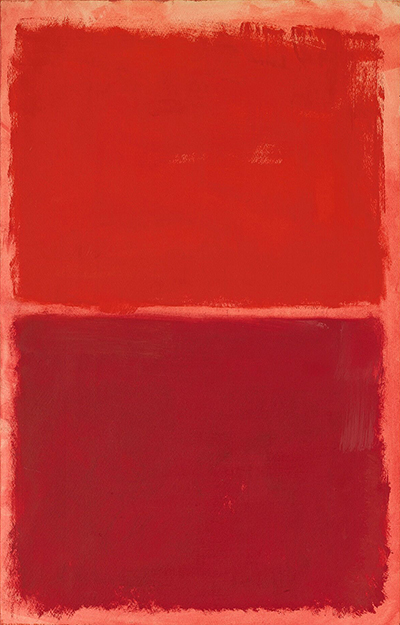
Mark Rothko, Untitled (Red on Red), 1969, Kate Rothko Prizel. Christopher Rothko / Artists Rights Society, New York, NY, USA.
As stated by Professor Memory Holloway, in the National Gallery of Victoria Art Journal 23:
Of this highly reductive pictorial statement Rothko required much: that it communicate the initial religious experience felt by the artist as he made it, and that it embody human emotions and human drama which Rothko professed to be the central focus of his work. Color, by imposing itself on the spectator, and by actively drawing him into its pictorial space, was to bear the burden of metaphysical content. This experience, what Dore Ashton has called ‘the state of being moved’, is what is offered and contained in Rothko’s work.
– Professor Memory Holloway in Mark Rothko’s Untitled (Red): Color and the experience of the sublime. National Gallery of Victoria Art Journal 23, 26 Jun 2014.
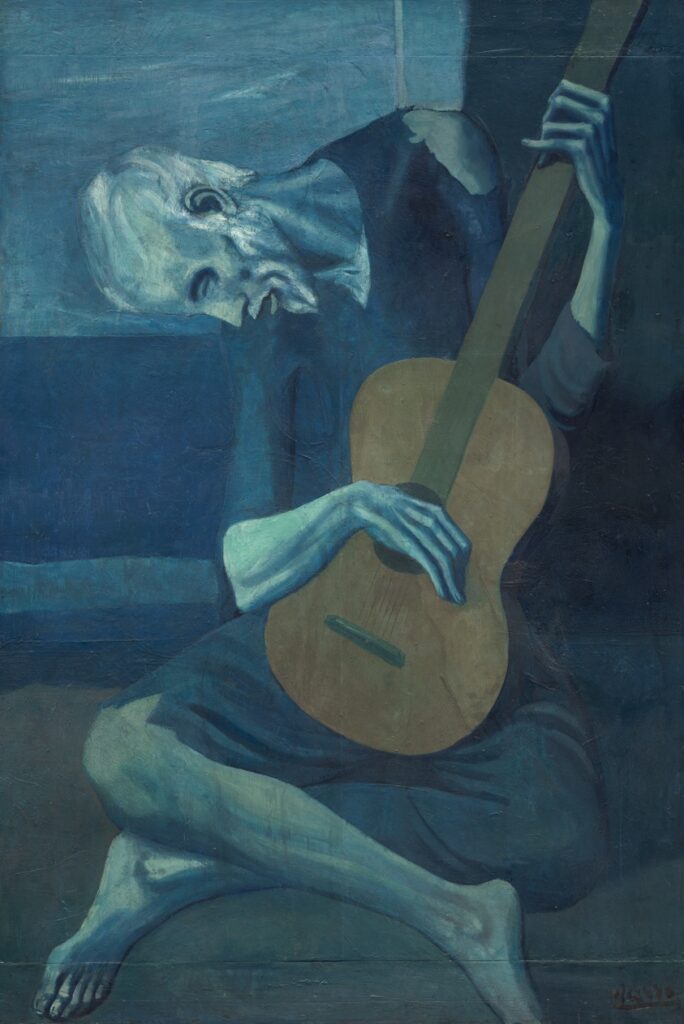
Pablo Picasso, The Old Guitarist, 1904, Art Institute of Chicago, Chicago, IL, USA.
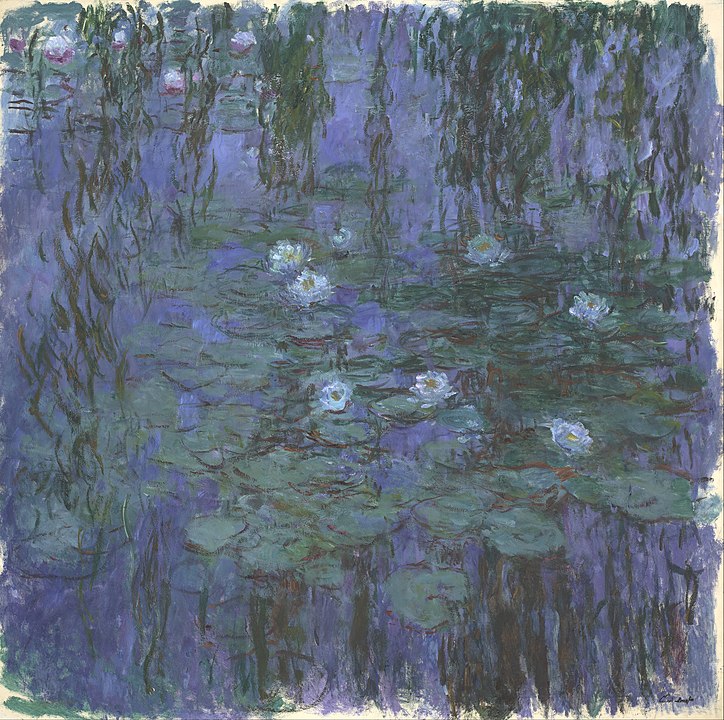
Claude Monet, Blue Water Lilies, 1916-1919, Musée d’Orsay, Paris, France.
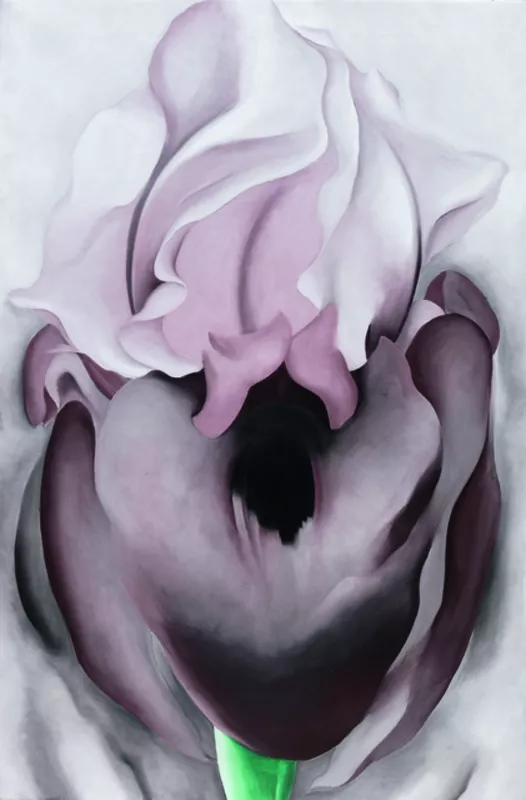
Georgia O’Keeffe, Black Iris VI, 1936, Georgia O’Keeffe Museum, New York, NY, USA.
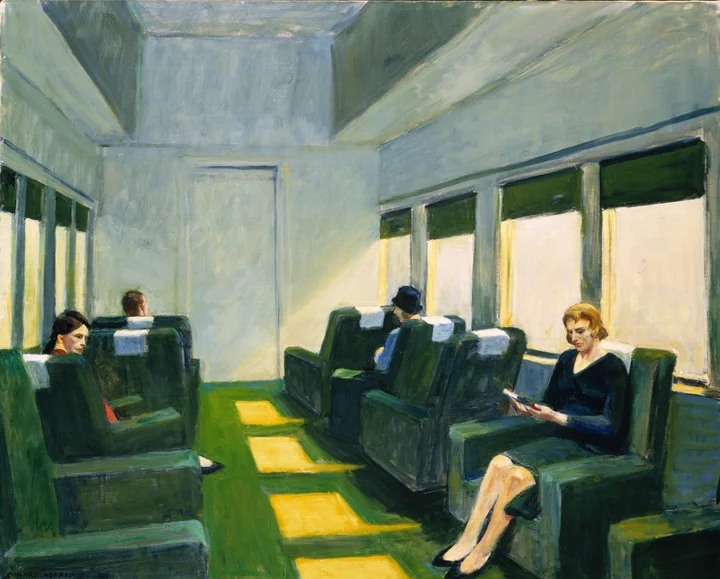
Edward Hopper, Chair Car, 1965, private collection. Christie’s.
Yellow can bring a cheerful feeling to a painting, but it can also be the cause of saturation, creating an overwhelming and overstimulated sensation.
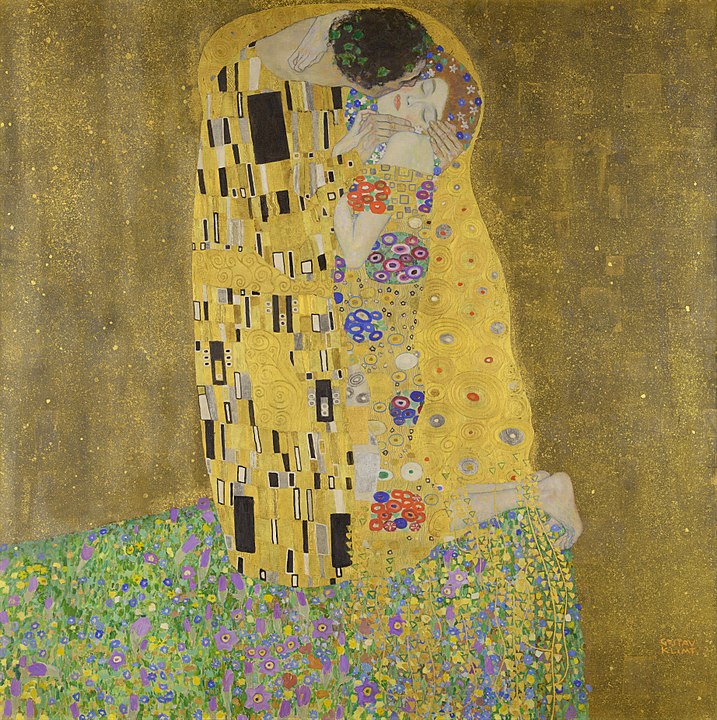
Gustav Klimt, The Kiss, 1907-1908, Österreichische Galerie Belvedere, Vienna, Austria.
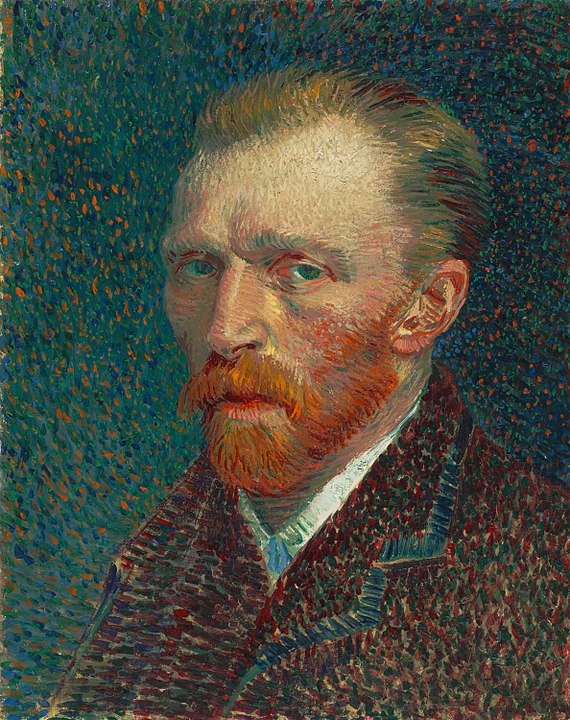
Vincent van Gogh, Self-Portrait, 1887, Art Institute of Chicago, Chicago, IL, USA.
Oh am I blue
Am I blue
Ain’t these tears in my eyes tellin’ you
Well am I blue
You’d be too
If each plan that you had, done and fell through.Am I Blue?
DailyArt Magazine needs your support. Every contribution, however big or small, is very valuable for our future. Thanks to it, we will be able to sustain and grow the Magazine. Thank you for your help!